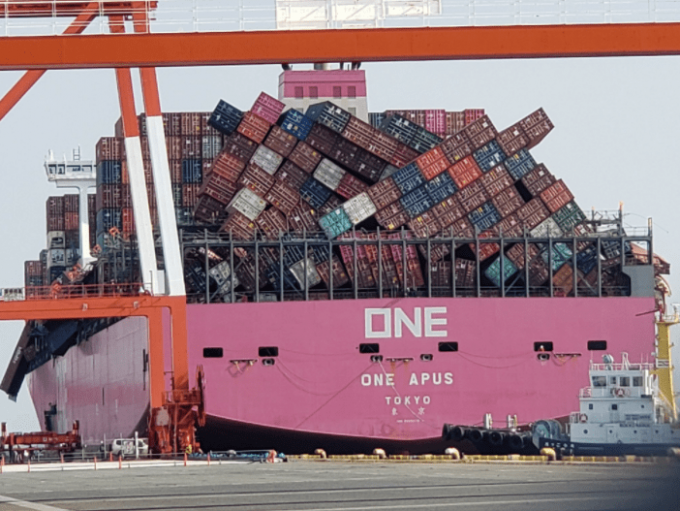IMO rules reporting containers lost overboard mandatory
The International Maritime Organization (IMO) has made the reporting of containers lost overboard a legal ...

The 14,000 teu ONE Apus, which suffered a massive container stack collapse en route to Long Beach last week, today berthed at the Japanese port of Kobe.
The line confirmed yesterday that 1,816 boxes had been lost overboard, including 64 dangerous goods (DG) boxes when the ...


Comment on this article
Desen Gunawan
December 09, 2020 at 2:25 amThey should redesign the vessels to be more stormproof or there should be a mechanism binding all containers in the event of a bad weather at sea.
Brian D
December 25, 2020 at 6:30 amThese ships are loaded to full capacity, really high up. They are anchored down but if they fastened them to the ship to the point of where they could never fall off, now the entire ship is at risk of flipping on its side and sinking with that kind of massive weight.
Don’t sail through hurricanes.
Jack
December 09, 2020 at 2:34 amAs tragic as it can get, it is still the coolest thing to watch the ships while sitting along the river in downtown Savannah with my grandsons as it heads towards the atlantic ocean.
Harry Kidd
December 09, 2020 at 5:35 amI sail a sailboat in the Gulf & Atlantic.
THIS is dangerous for all .
Are the sightings of these containers normally recorded and posted alerting
ship traffic ?